Over 30 years of anarchist writing from Ireland listed under hundreds of topics
History
Remembering 1916 Together: Anarchist Perspectives - video from #DABF 2016
A century ago, an armed insurrection took place in Ireland to end British rule and to establish an independent Irish Republic. The 1916 Rising was soon accompanied by major popular revolts against World War One across Europe and later emulated by anti-colonial movements across the Global South.
When it comes to remembering the 1916 Rising, why do conservative politicians and historians want to convince us that it would have been better for us if Pearse and Connolly had stayed at home? Why did the state parade lots of military equipment and personnel down O’Connell Street to mark the centenary? Why did so many people turn out to watch it?
This panel attempts to think through the meaning of 1916 for us today, and the politics at stake in how these events are remembered, forgotten, and mis-remembered.
Squatting, Urban Politics & the Dublin Housing Action Committee: 1968-71
 The contemporary crisis of capitalism has made markedly visible the relationship between finance capital and property speculation, between the concentrated money-power of bankers and speculators and the shaping of the built environment in our towns and cities.
The contemporary crisis of capitalism has made markedly visible the relationship between finance capital and property speculation, between the concentrated money-power of bankers and speculators and the shaping of the built environment in our towns and cities.
1913 Lockout in Dublin & Larkinism - beyond the myths
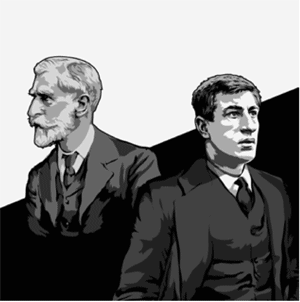 In this article, Donal Ó Fallúin looks briefly at the politics, ideas and misconceptions around the Dublin Lockout of 1913, and shows that the event is much more complex than many have allowed it to be, by attempting to narrow it down to a small event within the nationalist narrative of the period.
In this article, Donal Ó Fallúin looks briefly at the politics, ideas and misconceptions around the Dublin Lockout of 1913, and shows that the event is much more complex than many have allowed it to be, by attempting to narrow it down to a small event within the nationalist narrative of the period.
The 1913 Lockout is a monumental event in the history of the Irish working class. It marks the single greatest confrontation between the forces of labour and capital in Irish history, and the six-month dispute which tore Dublin apart saw a new, militant spirit of trade unionism collide with the force of native capitalism in an unprecedented manner.
Authoritarianism and the early Irish State
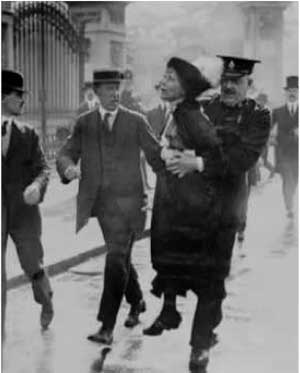 Fin Dwyer looks at the latter years of Ireland’s first post independence government, which having successfully suppressed political opposition and the workers’ movement, went on to “attack women and enforce their moral and ethical values on wider society”. From the clearing of prostitutes from the Monto and the filling of the Magdalene laundries to the institutionalisation of child abuse, he describes how the state’s close association with the Catholic Church played a decisive role in forming attitudes to women and sex that have had a devastating effect on Irish society that can still be felt today.
Fin Dwyer looks at the latter years of Ireland’s first post independence government, which having successfully suppressed political opposition and the workers’ movement, went on to “attack women and enforce their moral and ethical values on wider society”. From the clearing of prostitutes from the Monto and the filling of the Magdalene laundries to the institutionalisation of child abuse, he describes how the state’s close association with the Catholic Church played a decisive role in forming attitudes to women and sex that have had a devastating effect on Irish society that can still be felt today.
Torture, Murder & Exclusion: Ireland’s first 10 years of Independence
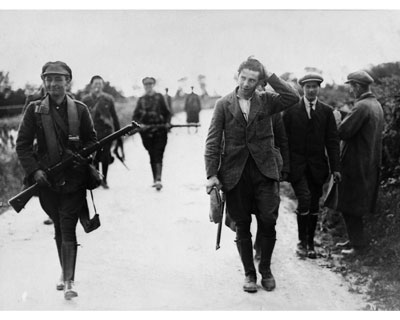 The 1916 proclamation, the manifesto of the 1916 rebels, states: “The Republic guarantees religious and civil liberty, equal rights and equal opportunities to all its citizens, and declares its resolve to pursue the happiness and prosperity of the whole nation and of all its parts, cherishing all the children of the nation equally, and oblivious of the differences carefully fostered by an alien government, which have divided a minority from the majority in the past.”
The 1916 proclamation, the manifesto of the 1916 rebels, states: “The Republic guarantees religious and civil liberty, equal rights and equal opportunities to all its citizens, and declares its resolve to pursue the happiness and prosperity of the whole nation and of all its parts, cherishing all the children of the nation equally, and oblivious of the differences carefully fostered by an alien government, which have divided a minority from the majority in the past.”
These noble aspirations would become almost a bible of Irish Republican ideals and within six years, after the end of the War of Independence in 1922, a section of that movement had a chance to implement these ideals. However the society established after the war of independence “The Irish Free State” was a pale shadow of even the most modest interpretation of this document. Civil liberties were almost non existent, citizens were not equal, with women becoming second class while the poor were plunged further into destitution.
The Famine, the Land War & 19th Century Resistance- why is it not happening today
 Over the past three years Ireland has witnessed unprecedented austerity. An aspect that has surprised many people has been the limited and at best sporadic resistance to what has been a savage cut in people’s standards of living. Politicians and the media have on many occasions relished the fact that resistance has been largely ineffectual and isolated, while many left wing activists have been left questioning why most people seem willing to take so much pain.
Over the past three years Ireland has witnessed unprecedented austerity. An aspect that has surprised many people has been the limited and at best sporadic resistance to what has been a savage cut in people’s standards of living. Politicians and the media have on many occasions relished the fact that resistance has been largely ineffectual and isolated, while many left wing activists have been left questioning why most people seem willing to take so much pain.
The Spanish Civil War: Anarchism in Action
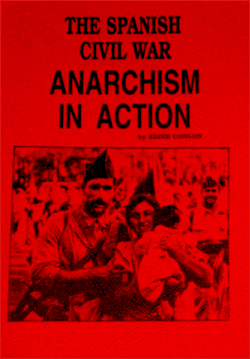 A detailed introduction to the role anarchism played in the Spanish Civil War and the anarchist revolution within the republican zone.
A detailed introduction to the role anarchism played in the Spanish Civil War and the anarchist revolution within the republican zone.
Much has been written about the Spanish Civil War but the contribution of the Anarchists has been either totally ignored or reduced to a few footnotes which were often composed of blatant lies. To set the record straight this pamphlet was produced. It is not a history of the Civil War, that would require many hundreds of pages to do justice to the subject. It is an uncovering of the "hidden history" of the Anarchist participation in Spain's anti-fascist struggle.
The anarchist masses threw themselves into a fight against fascism, and its cause, capitalism. Unfortunately the revolution was not complete, the CNT leaders held it back. Indeed their behaviour highlights the effect that power can have on even those who lay claim to anarchism. Spain provided important lessons for anarchists.
The revolutionary message of the 'Friends of Durruti'
 The Spanish anarchist organization 'The Friends of Durruti' was formed by members of the CNT in 1937 in opposition to the collaboration of the CNT leadership in the government of Republican Spain. The first heavily censored issue of their paper 'Friend of the People' appeared just after the Mayday's in Barcelona, sections of it are reproduced for the first time in English in this pamphlet. The Mayday defense of the revolution in Barcelona was crushed at the cost of 500 lives, including the disappearance, torture and murder of key anarchist organisers by the stalinists. The Friends of Durruti outlined an alternative path for Spanish anarchists, one intended to not only protect but to expand the revolution and bring it to victory.
The Spanish anarchist organization 'The Friends of Durruti' was formed by members of the CNT in 1937 in opposition to the collaboration of the CNT leadership in the government of Republican Spain. The first heavily censored issue of their paper 'Friend of the People' appeared just after the Mayday's in Barcelona, sections of it are reproduced for the first time in English in this pamphlet. The Mayday defense of the revolution in Barcelona was crushed at the cost of 500 lives, including the disappearance, torture and murder of key anarchist organisers by the stalinists. The Friends of Durruti outlined an alternative path for Spanish anarchists, one intended to not only protect but to expand the revolution and bring it to victory.
Left Communism & Its Ideology
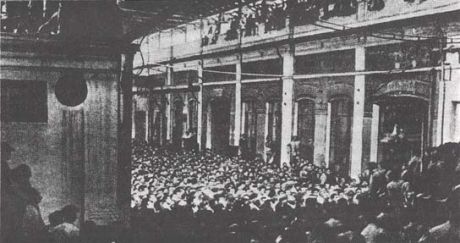
Anarchism is today finally emerging out of its long held position as ‘the conscience of the workers’ movement’, as the eternal critic of Leninism and state centred politics.
It long took the side of the working class against the Party, a position Lenin mocked when he wrote: “The mere presentation of the question—"dictatorship of the party or dictatorship of the class(1); dictatorship (party) of the leaders, or dictatorship (party) of the masses?"—testifies to most incredibly and hopelessly muddled thinking....to contrast, in general, the dictatorship of the masses with a dictatorship of the leaders is ridiculously absurd, and stupid.”(2) Interestingly this was not written about anarchists, but rather about the position held by a Dutch-German Marxist tendency that was part of the Comintern. This tendency and others comprise what is known as ‘left-communism’. (Pic: Workers of Fiat in Italy take over the Factories )
Nationalism, socialism and partition
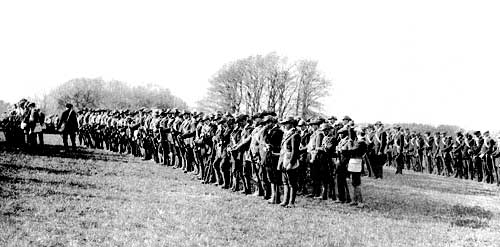 The period of Irish history from the 1880's to the 1920's defined and divided politics including socialist politics, on the island for the rest of the century. The most militant workers struggles occurred in the second half of that period, north and south, concentrated in the last five years. This was also the period of the 1916 insurrection in Dublin, the 1918-21 War of Independence, the treaty and partition of Ireland in 1921 and then in the south the bloody Civil War ending in 1923.
The period of Irish history from the 1880's to the 1920's defined and divided politics including socialist politics, on the island for the rest of the century. The most militant workers struggles occurred in the second half of that period, north and south, concentrated in the last five years. This was also the period of the 1916 insurrection in Dublin, the 1918-21 War of Independence, the treaty and partition of Ireland in 1921 and then in the south the bloody Civil War ending in 1923.
The year 1919 saw the greatest demonstration of the potential of Irish workers, north and south to take over the running of society but the events of the following years cemented the division that would do much to end workers militancy. In terms of working class struggle the periods of militancy of northern and southern workers coincide. Yet the working class was divided and these struggles remained almost completely isolated from each other. (Image: UVF training in 1914)

